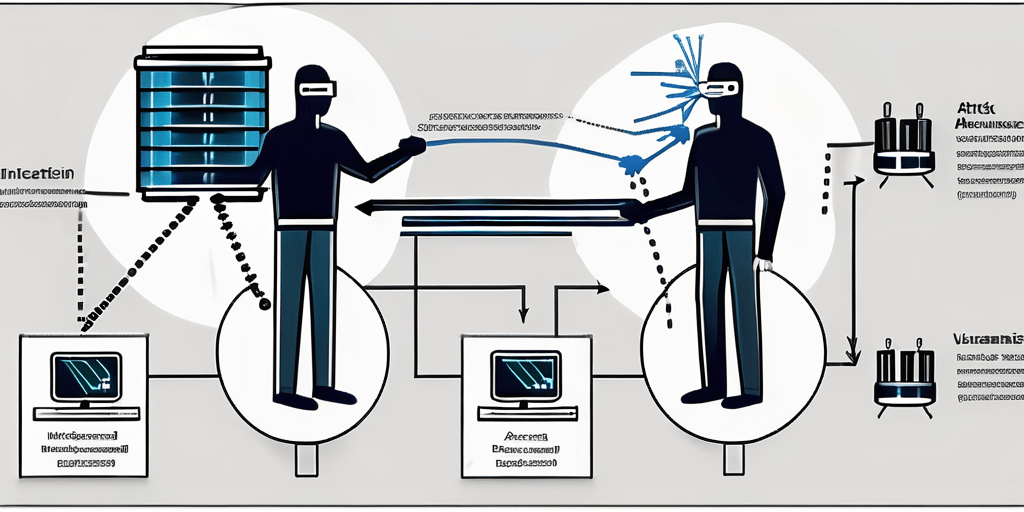In today’s interconnected world, where data is the new currency, cybersecurity should be a top priority for businesses and individuals. One of the most prevalent and dangerous forms of cyberattack is SQL injection (SQLi). This article will delve into SQL injection, understand its intricacies, and explore preventive measures to safeguard against it.
Understanding SQL Injection
What is SQL Injection?
SQL injection is a malicious technique that allows attackers to manipulate a web application’s database by exploiting vulnerabilities in its SQL queries. By injecting malicious SQL statements into user inputs, an attacker can bypass authentication, retrieve sensitive information, modify or delete data, and even gain unauthorized access to the underlying operating system.

SQL injection attacks are a significant concern for organizations and individuals alike. They can potentially cause severe damage, financial losses, data breaches, compromised customer trust, legal consequences, and reputational damage. Therefore, it is crucial to have a comprehensive understanding of SQL injection to prevent such attacks effectively.
Let’s delve deeper into the impact of SQL injection attacks on databases and explore the common techniques attackers use.
The Impact of SQL Injection on Databases
SQL injection attacks can have devastating consequences for databases. They can compromise data confidentiality, integrity, and availability, leading to significant operational disruptions and financial losses.
When an attacker successfully exploits a SQL injection vulnerability, they can extract sensitive information from the database, such as usernames, passwords, and credit card details. This stolen data can then be used for identity theft, financial fraud, or other malicious activities.
Moreover, SQL injection attacks can modify or delete data, causing inconsistencies and rendering the system unreliable. Imagine the chaos if critical business data, customer records, or financial transactions were tampered with or lost due to a SQL injection attack.
Furthermore, if an attacker gains access to the underlying operating system through SQL injection, they can install malware, create backdoors, and perform other malicious activities that pose a serious threat to the entire infrastructure. This can further compromise sensitive data, unauthorized access to other systems, and potentially damage the organization’s reputation.
Common Techniques Used in SQL Injection
Attackers employ various techniques to carry out SQL injection attacks. Understanding these techniques is crucial for developing effective preventive measures.
One common technique is known as “Union-Based SQL Injection,” where the attacker leverages the UNION SQL operator to combine the result sets of two or more SELECT statements. By carefully crafting the injected SQL code, the attacker can extract information from the database, even if the original query did not intend to retrieve that specific data.
Another technique is “Time-Based Blind SQL Injection,” where the attacker induces delays in the SQL queries and observes the application’s response time to infer whether the injected condition is true or false. The attacker can extract data or bypass authentication mechanisms by iteratively executing such queries.
Other techniques include “Error-Based SQL Injection,” where the attacker exploits error messages generated by the database to gather information; “Boolean-Based Blind SQL Injection,” where the attacker uses boolean conditions to infer information from the database; and “Out-of-Band SQL Injection,” where the attacker leverages alternative communication channels to extract data from the database.
It is important to note that these are just a few examples of SQL injection techniques, and attackers are constantly evolving their methods to bypass security measures. Therefore, developers, security professionals, and organizations must stay updated on the latest attack techniques and implement robust security measures to mitigate the risk of SQL injection.
The Anatomy of an SQLi Attack
The Anatomy of an SQLi Attack is a complex and sophisticated process that requires careful planning and execution. In this section, we will delve deeper into the various stages of an SQL injection attack, providing a comprehensive understanding of the techniques employed by attackers.

Identifying Vulnerabilities
Before launching an SQL injection attack, an attacker must identify vulnerabilities in the target web application. This entails analyzing the application’s inputs, data flows, and the underlying database to discern potential injection points.
One common source of vulnerability is insufficient input validation. When an application fails to validate user inputs properly, it becomes susceptible to SQL injection attacks. Attackers can exploit this weakness by injecting malicious SQL code into user input fields, tricking the application into executing unintended SQL statements.
Another vulnerability arises from concatenated SQL queries. When an application constructs SQL queries by concatenating user-supplied data without proper sanitization, it allows attackers to manipulate the query structure and inject malicious code.
The lack of parameterized queries is yet another vulnerability that attackers can exploit. Parameterized queries provide a way to separate SQL code from user-supplied data, preventing the injection of malicious code. However, if an application fails to utilize parameterized queries, it becomes vulnerable to SQL injection attacks.
Dynamic queries, which are SQL queries constructed on the fly based on user inputs, can also introduce vulnerabilities. Attackers can manipulate these queries by injecting malicious code into the dynamically generated SQL statements, potentially gaining unauthorized access to the database.
Exploiting the Weaknesses
Once vulnerabilities are identified, the attacker can exploit them by crafting malicious inputs that manipulate the SQL queries. This can involve adding SQL statements as part of user input fields, manipulating URL parameters, or modifying hidden form fields.
Attackers may also use tools like SQLmap or Burp Suite to automate the process of exploiting SQL injection vulnerabilities. These tools can help attackers identify the database’s structure, extract data, and execute arbitrary commands on the underlying operating system.
It is worth noting that attackers may employ various techniques to obfuscate their malicious intentions. They may use encoding techniques, such as URL encoding or hexadecimal encoding, to bypass input filters and evade detection. Additionally, attackers may leverage time-based blind SQL injection or error-based SQL injection techniques to extract sensitive information from the database.
The Aftermath of an SQLi Attack
The aftermath of an SQL injection attack can be far-reaching and devastating. The compromised data may be sold on the dark web, leading to identity theft, financial fraud, and other cybercrimes. Furthermore, the affected organization may face legal consequences, tarnished reputation, customer backlash, and costly remediation efforts.
Organizations must respond swiftly and effectively to such attacks. Incident response teams should be activated, affected systems should be isolated, and forensic investigations should be conducted to determine the extent of the breach and strengthen security measures.
Organizations should also prioritize implementing preventive measures to mitigate the risk of SQL injection attacks. This includes conducting regular security assessments, implementing input validation and sanitization techniques, utilizing parameterized queries, and keeping software and frameworks up to date with the latest security patches.
By understanding the anatomy of an SQLi attack and taking proactive steps to fortify their defenses, organizations can significantly reduce the likelihood of falling victim to this prevalent and damaging cyberattack.
Preventing SQL Injection Attacks
The rise of SQL injection attacks has highlighted the importance of implementing robust security measures to protect sensitive data. One of the most effective ways to prevent such attacks is to implement proper input validation and use parameterized queries.

Input Validation and Parameterized Queries
Input validation is a critical step in preventing SQL injection attacks. It involves scrubbing and sanitizing user inputs to ensure they meet expected patterns. This process includes validating data types, length constraints, and using regular expressions to filter out malicious characters.
For example, when a user enters their name in a web form, input validation can ensure that only alphabetic characters are accepted, preventing the injection of any SQL code. By implementing strict input validation, organizations can significantly reduce the risk of SQL injection attacks.
Parameterized queries, also known as prepared statements, are another essential defense mechanism against SQL injection attacks. They allow developers to separate SQL code from user inputs. Parameterized queries use placeholders to represent dynamic values instead of directly embedding user inputs into the SQL query.
For instance, instead of concatenating user inputs directly into the SQL query, a parameterized query would use placeholders like “?” or named parameters. The actual values are then bound to these placeholders, preventing attackers from injecting malicious SQL code directly into the queries.
Furthermore, parameterized queries provide an additional layer of security by automatically handling the necessary escaping of special characters. This ensures that user inputs are treated as data and not executable code, effectively mitigating the risk of SQL injection attacks.
Least Privilege Principle
Adhering to the least privilege principle is vital to limit the damage caused by a successful SQL injection attack. This principle involves granting users the minimum privileges necessary to perform their tasks, thereby reducing the potential impact of an attack.
Database administrators should regularly review and update user privileges to ensure that each user has only the required permissions. Organizations can prevent attackers from escalating their access rights and manipulating the system by implementing strict access controls.
Additionally, organizations should consider implementing role-based access control (RBAC) to further enhance security. RBAC allows administrators to assign permissions based on specific roles, ensuring that users only have access to the data and functions relevant to their job responsibilities.
Regular Database Monitoring and Auditing
Ongoing monitoring and auditing of databases can significantly enhance the detection and prevention of SQL injection attacks. By meticulously analyzing query logs and monitoring for suspicious activities, organizations can identify potential vulnerabilities and take immediate actions to mitigate risks.
Implementing database intrusion detection and prevention systems can provide real-time monitoring and alerting capabilities. These systems can detect anomalous behavior, such as unusual query patterns or excessive data extraction, and raise alerts for further investigation.
In addition to real-time monitoring, organizations should also conduct regular vulnerability assessments and penetration testing. These proactive measures can help identify and patch any weak points in the database before attackers exploit them. Organizations can significantly reduce the risk of SQL injection attacks by staying one step ahead of potential attackers.
Best Practices for SQL Injection Prevention
SQL injection is a common and dangerous vulnerability that can compromise the security of web applications. Developers must follow secure coding practices and implement various measures to prevent SQL injection attacks.
Secure Coding Practices
Developers should adhere to secure coding practices to minimize the risk of SQL injection vulnerabilities. One crucial practice is avoiding concatenating user inputs in SQL queries. Instead, developers should use parameterized queries, which separate the SQL code from the user input. This approach ensures that user inputs are treated as data, not executable code.
Another important practice is to validate all user inputs before using them in SQL queries. This validation process should include checking for the expected data type, length, and format. By validating user inputs, developers can prevent malicious inputs from being executed as SQL commands.
Using stored procedures can also enhance security. Stored procedures are precompiled SQL statements stored in the database server. By utilizing stored procedures, developers can reduce the risk of SQL injection by separating the SQL code from the application code.
Regular code reviews and security-focused training for developers are crucial steps in establishing a secure development lifecycle. Code reviews help identify potential vulnerabilities and ensure that secure coding practices are followed consistently. Security-focused training equips developers with the knowledge and skills to identify and prevent SQL injection attacks.
Regular Software Updates and Patching
Keeping software up to date with the latest security patches is essential for mitigating SQL injection risks. Vendors regularly release updates that address known vulnerabilities and improve the overall security of their software.
Organizations should establish patch management processes to ensure all software components, including web servers, database engines, and application frameworks, are regularly updated. This includes monitoring vendor websites and security advisories to stay informed about new patches and updates.
Regular software updates address SQL injection vulnerabilities and provide protection against other types of security threats. By staying current, organizations can benefit from the latest security enhancements and minimize the risk of successful attacks.
Implementing Web Application Firewalls
Web Application Firewalls (WAFs) can provide an additional layer of defense against SQL injection attacks. WAFs analyze the incoming web traffic and filter out malicious requests, including SQL injection attempts.
WAFs can be implemented as a physical appliance or as a software solution. They should be configured to monitor and block suspicious activities, such as SQL injection patterns and techniques. WAFs can also offer features like request rate limiting, bot protection, and content filtering to enhance web application security.
When implementing a WAF, organizations should consider the specific needs of their web applications and choose a solution that aligns with their security requirements. Regular monitoring and tuning of the WAF rules are necessary to ensure optimal protection against SQL injection attacks.
In conclusion, preventing SQL injection requires a multi-layered approach that includes secure coding practices, regular software updates and patching, and the implementation of web application firewalls. By following these best practices, organizations can significantly reduce the risk of SQL injection vulnerabilities and protect their web applications from malicious attacks.
Conclusion
SQL injection attacks continue to pose a significant threat to organizations and individuals alike. It’s crucial to understand the intricacies of SQL injection and implement preventive measures to safeguard against these attacks.
Organizations can significantly reduce the risk of SQL injection vulnerabilities and protect their valuable data and reputation by following best practices such as input validation, parameterized queries, least privilege principles, and regular monitoring. Stay informed, stay vigilant, and stay protected!
If you’re looking to bolster your organization’s defenses against SQL injection and other cybersecurity threats, Blue Goat Cyber is here to help. As a Veteran-Owned business specializing in a wide range of B2B cybersecurity services, including medical device cybersecurity, penetration testing, and compliance with HIPAA, FDA, SOC 2, and PCI standards, we’re committed to securing your operations against attackers. Contact us today for cybersecurity help, and let us protect your valuable data and reputation.
